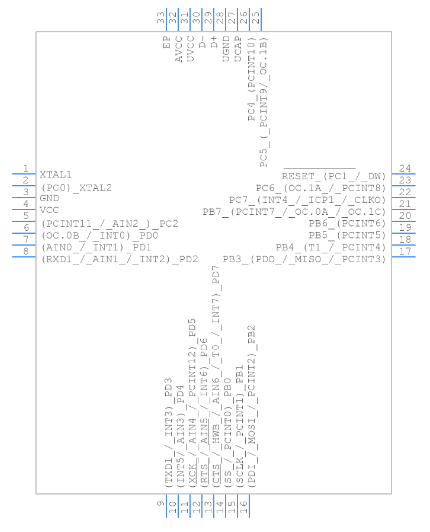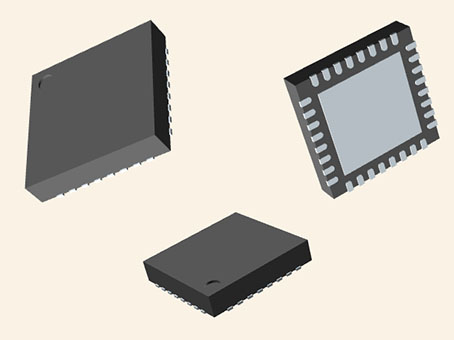ATMEGA16U2-MU 8-Bit Microcontroller: Features, Pinout, and Datasheet
16KB 8K x 16 FLASH AVR 8-Bit Microcontroller AVR® ATmega Series ATMEGA16U2 32 Pin 16MHz 5V 32-VFQFN Exposed Pad









16KB 8K x 16 FLASH AVR 8-Bit Microcontroller AVR® ATmega Series ATMEGA16U2 32 Pin 16MHz 5V 32-VFQFN Exposed Pad
ATMEGA16U2-MU is a CMOS 8-bit microcontroller with a USB controller and 22 I/O ports, as well as 16KB of ISP flash program memory. This article mainly introduces features, pinout, datasheet and other detailed information about Microchip Technology ATMEGA16U2-MU.
- ATMEGA16U2-MU Description
- ATMEGA16U2-MU Pinout
- ATMEGA16U2-MU CAD Model
- ATMEGA16U2-MU Features
- Specifications
- Parts with Similar Specs
- ATMEGA16U2-MU Functional Block Diagram
- ATMEGA16U2-MU Schematic
- ATMEGA16U2-MU Equivalent
- ATMEGA16U2-MU Applications
- ATMEGA16U2-MU Package
- ATMEGA16U2-MU Manufacturer
- Trend Analysis
- Datasheet PDF
ATMEGA16U2-MU Description
ATMEGA16U2-MU is a CMOS 8-bit microcontroller with a USB controller and 22 I/O ports, as well as 16KB of ISP flash program memory. The AVR core processor runs at a 16MHz reference frequency. The ATmega16U2 delivers throughputs approaching 1 MIPS per MHz by implementing strong instructions in a single clock cycle, allowing the system designer to optimize processing performance and power consumption.
Atmel's nonvolatile high-density memory technology was used to create and manufacture the ATMEGA16U2-MU. The ISP flash in chip allows for in-system reprogramming via the SPI serial interface. By combining In-System Self-Programmable Flash with an 8-bit RISC CPU on a monolithic chip, the Atmel ATmega16U2 is a well-built powerful microcontroller that offers a highly versatile and cost-effective solution to many embedded control applications.
In-circuit emulators, C compilers, evaluation kits, macro assemblers, and program debugger/simulators are among the program and system development tools available for the ATmega16U2.
ATMEGA16U2-MU Pinout
The following figure is ATMEGA16U2-MU Pinout.

ATMEGA16U2-MU Pinout
| Pin Number | Pin Name | Description |
| 4 | VCC | Digital supply voltage. |
| 3 | GND | Ground. |
| 32 | AVCC | AVCC is the supply voltage pin (input) for all analog features (Analog Comparator, PLL). It should be externally connected to VCC through a low-pass filter. |
| 14~21 | Port B (PB7..PB0) | Port B is an 8-bit bi-directional I/O port with internal pull-up resistors (selected for each bit). The Port B output buffers have symmetrical drive characteristics with both high sink and source capability. As inputs, Port B pins that are externally pulled low will source current if the pull-up resistors are activated. The Port B pins are tri-stated when a reset condition becomes active, even if the clock is not running. |
| 5,22,23,25,26 | Port C (PC7..PC0) | Port C is an 8-bit bi-directional I/O port with internal pull-up resistors (selected for each bit). The Port C output buffers have symmetrical drive characteristics with both high sink and source capability. As inputs, Port C pins that are externally pulled low will source current if the pull-up resistors are activated. The Port C pins are tri-stated when a reset condition becomes active, even if the clock is not running. |
| 6~13 | Port D (PD7..PD0) | Port D serves as analog inputs to the analog comparator. Port D also serves as an 8-bit bi-directional I/O port, if the analog comparator is not used (con cerns PD2/PD1 pins). Port pins can provide internal pull-up resistors (selected for each bit). The Port D output buffers have symmetrical drive characteristics with both high sink and source capability. As inputs, Port D pins that are externally pulled low will source current if the pull-up resistors are activated. The Port D pins are tri-stated when a reset condition becomes active, even if the clock is not running. |
| 30 | D- | USB Full Speed Negative Data Upstream Port |
| 29 | D+ | USB Full Speed Positive Data Upstream Port |
| 28 | UGND | USB Ground. |
| 31 | UVCC | USB Pads Internal Regulator Input supply voltage. |
| 27 | UCAP | USB Pads Internal Regulator Output supply voltage. Should be connected to an external capac itor (1μF). |
| 24 | RESET/PC1/dW | Reset input. A low level on this pin for longer than the minimum pulse length will generate a reset, even if the clock is not running. Shorter pulses are not guaranteed to generate a reset. This pin alternatively serves as debugWire channel or as generic I/O. The configuration depends on the fuses RST DISBL and DWEN. |
| 1 | XTAL1 | Input to the inverting Oscillator amplifier and input to the internal clock operating circuit. |
| 2 | XTAL2/PC0 | Output from the inverting Oscillator amplifier if enabled by Fuse. Also serves as a generic I/O. |
ATMEGA16U2-MU CAD Model
ATMEGA16U2-MU Features
High Performance, Low Power AVR® 8-Bit Microcontroller
Advanced RISC Architecture
– 125 Powerful Instructions – Most Single Clock Cycle Execution
– 32 x 8 General Purpose Working Registers
– Fully Static Operation
– Up to 16 MIPS Throughput at 16 MHz
Non-volatile Program and Data Memories
– 8K /16K/32K Bytes of In-System Self-Programmable Flash
– 512/512/1024 EEPROM
– 512/512/1024 Internal SRAM
– Write/Erase Cycles: 10,000 Flash/ 100,000 EEPROM
– Data retention: 20 years at 85°C/ 100 years at 25°C
– Optional Boot Code Section with Independent Lock Bits
In-System Programming by on-chip Boot Program hardware-activated after reset
True Read-While-Write Operation
– Programming Lock for Software Security
USB 2.0 Full-speed Device Module with Interrupt on Transfer Completion
– Complies fully with Universal Serial Bus Specification REV 2.0
– 48 MHz PLL for Full-speed Bus Operation : data transfer rates at 12 Mbit/s
– Fully independant 176 bytes USB DPRAM for endpoint memory allocation
– Endpoint 0 for Control Transfers: from 8 up to 64-bytes
– 4 Programmable Endpoints:
IN or Out Directions
Bulk, Interrupt and IsochronousTransfers
Programmable maximum packet size from 8 to 64 bytes
Programmable single or double buffer
– Suspend/Resume Interrupts
– Microcontroller reset on USB Bus Reset without detach
– USB Bus Disconnection on Microcontroller Request
Peripheral Features
– One 8-bit Timer/Counters with Separate Prescaler and Compare Mode (two 8-bit PWM channels)
– One 16-bit Timer/Counter with Separate Prescaler, Compare and Capture Mode (three 8-bit PWM channels)
– USART with SPI master only mode and hardware flow control (RTS/CTS)
– Master/Slave SPI Serial Interface
– Programmable Watchdog Timer with Separate On-chip Oscillator
– On-chip Analog Comparator
– Interrupt and Wake-up on Pin Change
On Chip Debug Interface (debugWIRE)
Special Microcontroller Features
– Power-On Reset and Programmable Brown-out Detection
– Internal Calibrated Oscillator
– External and Internal Interrupt Sources
– Five Sleep Modes: Idle, Power-save, Power-down, Standby, and Extended Standby
I/O and Packages
– 22 Programmable I/O Lines
– QFN32 (5x5mm) / TQFP32 packages
Operating Voltages
– 2.7 - 5.5V
Operating temperature
– Industrial (-40°C to +85°C)
Maximum Frequency
– 8 MHz at 2.7V - Industrial range
– 16 MHz at 4.5V - Industrial range
Specifications
- TypeParameter
- Factory Lead Time11 Weeks
- Contact Plating
Contact plating (finish) provides corrosion protection for base metals and optimizes the mechanical and electrical properties of the contact interfaces.
Tin - Mount
In electronic components, the term "Mount" typically refers to the method or process of physically attaching or fixing a component onto a circuit board or other electronic device. This can involve soldering, adhesive bonding, or other techniques to secure the component in place. The mounting process is crucial for ensuring proper electrical connections and mechanical stability within the electronic system. Different components may have specific mounting requirements based on their size, shape, and function, and manufacturers provide guidelines for proper mounting procedures to ensure optimal performance and reliability of the electronic device.
Surface Mount - Mounting Type
The "Mounting Type" in electronic components refers to the method used to attach or connect a component to a circuit board or other substrate, such as through-hole, surface-mount, or panel mount.
Surface Mount - Package / Case
refers to the protective housing that encases an electronic component, providing mechanical support, electrical connections, and thermal management.
32-VFQFN Exposed Pad - Number of Pins32
- Manufacturer Package Identifier
The Manufacturer Package Identifier is a unique code or label assigned by the manufacturer to identify a specific package or housing style of an electronic component. This identifier helps in distinguishing between different package types of the same component, such as integrated circuits, transistors, or diodes. It typically includes information about the package dimensions, lead configuration, and other physical characteristics of the component. The Manufacturer Package Identifier is crucial for ensuring compatibility and proper assembly of electronic components in various devices and circuits.
32M1-A - Number of I/Os22
- Watchdog TimersYes
- Operating Temperature
The operating temperature is the range of ambient temperature within which a power supply, or any other electrical equipment, operate in. This ranges from a minimum operating temperature, to a peak or maximum operating temperature, outside which, the power supply may fail.
-40°C~85°C TA - Packaging
Semiconductor package is a carrier / shell used to contain and cover one or more semiconductor components or integrated circuits. The material of the shell can be metal, plastic, glass or ceramic.
Tray - Series
In electronic components, the "Series" refers to a group of products that share similar characteristics, designs, or functionalities, often produced by the same manufacturer. These components within a series typically have common specifications but may vary in terms of voltage, power, or packaging to meet different application needs. The series name helps identify and differentiate between various product lines within a manufacturer's catalog.
AVR® ATmega - Published2009
- Pbfree Code
The "Pbfree Code" parameter in electronic components refers to the code or marking used to indicate that the component is lead-free. Lead (Pb) is a toxic substance that has been widely used in electronic components for many years, but due to environmental concerns, there has been a shift towards lead-free alternatives. The Pbfree Code helps manufacturers and users easily identify components that do not contain lead, ensuring compliance with regulations and promoting environmentally friendly practices. It is important to pay attention to the Pbfree Code when selecting electronic components to ensure they meet the necessary requirements for lead-free applications.
yes - Part Status
Parts can have many statuses as they progress through the configuration, analysis, review, and approval stages.
Active - Moisture Sensitivity Level (MSL)
Moisture Sensitivity Level (MSL) is a standardized rating that indicates the susceptibility of electronic components, particularly semiconductors, to moisture-induced damage during storage and the soldering process, defining the allowable exposure time to ambient conditions before they require special handling or baking to prevent failures
3 (168 Hours) - Number of Terminations32
- Terminal Position
In electronic components, the term "Terminal Position" refers to the physical location of the connection points on the component where external electrical connections can be made. These connection points, known as terminals, are typically used to attach wires, leads, or other components to the main body of the electronic component. The terminal position is important for ensuring proper connectivity and functionality of the component within a circuit. It is often specified in technical datasheets or component specifications to help designers and engineers understand how to properly integrate the component into their circuit designs.
QUAD - Supply Voltage
Supply voltage refers to the electrical potential difference provided to an electronic component or circuit. It is crucial for the proper operation of devices, as it powers their functions and determines performance characteristics. The supply voltage must be within specified limits to ensure reliability and prevent damage to components. Different electronic devices have specific supply voltage requirements, which can vary widely depending on their design and intended application.
5V - Terminal Pitch
The center distance from one pole to the next.
0.5mm - Frequency
In electronic components, the parameter "Frequency" refers to the rate at which a signal oscillates or cycles within a given period of time. It is typically measured in Hertz (Hz) and represents how many times a signal completes a full cycle in one second. Frequency is a crucial aspect in electronic components as it determines the behavior and performance of various devices such as oscillators, filters, and communication systems. Understanding the frequency characteristics of components is essential for designing and analyzing electronic circuits to ensure proper functionality and compatibility with other components in a system.
16MHz - Base Part Number
The "Base Part Number" (BPN) in electronic components serves a similar purpose to the "Base Product Number." It refers to the primary identifier for a component that captures the essential characteristics shared by a group of similar components. The BPN provides a fundamental way to reference a family or series of components without specifying all the variations and specific details.
ATMEGA16U2 - Supply Voltage-Max (Vsup)
The parameter "Supply Voltage-Max (Vsup)" in electronic components refers to the maximum voltage that can be safely applied to the component without causing damage. It is an important specification to consider when designing or using electronic circuits to ensure the component operates within its safe operating limits. Exceeding the maximum supply voltage can lead to overheating, component failure, or even permanent damage. It is crucial to adhere to the specified maximum supply voltage to ensure the reliable and safe operation of the electronic component.
5.5V - Power Supplies
an electronic circuit that converts the voltage of an alternating current (AC) into a direct current (DC) voltage.?
3/5V - Supply Voltage-Min (Vsup)
The parameter "Supply Voltage-Min (Vsup)" in electronic components refers to the minimum voltage level required for the component to operate within its specified performance range. This parameter indicates the lowest voltage that can be safely applied to the component without risking damage or malfunction. It is crucial to ensure that the supply voltage provided to the component meets or exceeds this minimum value to ensure proper functionality and reliability. Failure to adhere to the specified minimum supply voltage may result in erratic behavior, reduced performance, or even permanent damage to the component.
4.5V - Interface
In electronic components, the term "Interface" refers to the point at which two different systems, devices, or components connect and interact with each other. It can involve physical connections such as ports, connectors, or cables, as well as communication protocols and standards that facilitate the exchange of data or signals between the connected entities. The interface serves as a bridge that enables seamless communication and interoperability between different parts of a system or between different systems altogether. Designing a reliable and efficient interface is crucial in ensuring proper functionality and performance of electronic components and systems.
SPI, UART, USART, USB - Memory Size
The memory capacity is the amount of data a device can store at any given time in its memory.
16kB - Oscillator Type
Wien Bridge Oscillator; RC Phase Shift Oscillator; Hartley Oscillator; Voltage Controlled Oscillator; Colpitts Oscillator; Clapp Oscillators; Crystal Oscillators; Armstrong Oscillator.
Internal - RAM Size
RAM size refers to the amount of random access memory (RAM) available in an electronic component, such as a computer or smartphone. RAM is a type of volatile memory that stores data and instructions that are actively being used by the device's processor. The RAM size is typically measured in gigabytes (GB) and determines how much data the device can store and access quickly for processing. A larger RAM size allows for smoother multitasking, faster loading times, and better overall performance of the electronic component. It is an important factor to consider when choosing a device, especially for tasks that require a lot of memory, such as gaming, video editing, or running multiple applications simultaneously.
512 x 8 - Voltage - Supply (Vcc/Vdd)
Voltage - Supply (Vcc/Vdd) is a key parameter in electronic components that specifies the voltage level required for the proper operation of the device. It represents the power supply voltage that needs to be provided to the component for it to function correctly. This parameter is crucial as supplying the component with the correct voltage ensures that it operates within its specified limits and performance characteristics. It is typically expressed in volts (V) and is an essential consideration when designing and using electronic circuits to prevent damage and ensure reliable operation.
2.7V~5.5V - uPs/uCs/Peripheral ICs Type
The parameter "uPs/uCs/Peripheral ICs Type" refers to the classification of various integrated circuits used in electronic devices. It encompasses microprocessors (uPs), microcontrollers (uCs), and peripheral integrated circuits that provide additional functionalities. This classification helps in identifying the specific type of chip used for processing tasks, controlling hardware, or interfacing with other components in a system. Understanding this parameter is essential for selecting the appropriate electronic components for a given application.
MICROCONTROLLER, RISC - Core Processor
The term "Core Processor" typically refers to the central processing unit (CPU) of a computer or electronic device. It is the primary component responsible for executing instructions, performing calculations, and managing data within the system. The core processor is often considered the brain of the device, as it controls the overall operation and functionality. It is crucial for determining the speed and performance capabilities of the device, as well as its ability to handle various tasks and applications efficiently. In modern devices, core processors can have multiple cores, allowing for parallel processing and improved multitasking capabilities.
AVR - Peripherals
In the context of electronic components, "Peripherals" refer to devices or components that are connected to a main system or device to enhance its functionality or provide additional features. These peripherals can include input devices such as keyboards, mice, and touchscreens, as well as output devices like monitors, printers, and speakers. Other examples of peripherals include external storage devices, network adapters, and cameras. Essentially, peripherals are external devices that expand the capabilities of a main electronic system or device.
Brown-out Detect/Reset, POR, PWM, WDT - Program Memory Type
Program memory typically refers to flash memory when it is used to hold the program (instructions). Program memory may also refer to a hard drive or solid state drive (SSD). Contrast with data memory.
FLASH - Core Size
Core size in electronic components refers to the physical dimensions of the core material used in devices such as inductors and transformers. The core size directly impacts the performance characteristics of the component, including its inductance, saturation current, and frequency response. A larger core size typically allows for higher power handling capabilities and lower core losses, while a smaller core size may result in a more compact design but with limitations on power handling and efficiency. Designers must carefully select the core size based on the specific requirements of the application to achieve optimal performance and efficiency.
8-Bit - Program Memory Size
Program Memory Size refers to the amount of memory available in an electronic component, such as a microcontroller or microprocessor, that is used to store program instructions. This memory is non-volatile, meaning that the data stored in it is retained even when the power is turned off. The program memory size determines the maximum amount of code that can be stored and executed by the electronic component. It is an important parameter to consider when selecting a component for a specific application, as insufficient program memory size may limit the functionality or performance of the device.
16KB 8K x 16 - Connectivity
In electronic components, "Connectivity" refers to the ability of a component to establish and maintain connections with other components or devices within a circuit. It is a crucial parameter that determines how easily signals can be transmitted between different parts of a circuit. Connectivity can be influenced by factors such as the number of input and output ports, the type of connectors used, and the overall design of the component. Components with good connectivity are essential for ensuring reliable and efficient operation of electronic systems.
SPI, UART/USART, USB - Bit Size
In electronic components, "Bit Size" refers to the number of bits that can be processed or stored by a particular component. A bit is the smallest unit of data in computing and can have a value of either 0 or 1. The Bit Size parameter is commonly used to describe the capacity or performance of components such as microprocessors, memory modules, and data buses. A larger Bit Size generally indicates a higher processing capability or storage capacity, allowing for more complex operations and larger amounts of data to be handled efficiently. It is an important specification to consider when selecting electronic components for specific applications that require certain levels of performance and data processing capabilities.
8 - Has ADC
Has ADC refers to the presence of an Analog-to-Digital Converter (ADC) in an electronic component. An ADC is a crucial component in many electronic devices as it converts analog signals, such as voltage or current, into digital data that can be processed by a digital system. Having an ADC allows the electronic component to interface with analog signals and convert them into a format that can be manipulated and analyzed digitally. This parameter is important for applications where analog signals need to be converted into digital form for further processing or control.
NO - DMA Channels
DMA (Direct Memory Access) Channels are a feature found in electronic components such as microcontrollers, microprocessors, and peripheral devices. DMA Channels allow data to be transferred directly between peripherals and memory without involving the CPU, thereby reducing the burden on the CPU and improving overall system performance. Each DMA Channel is typically assigned to a specific peripheral device or memory region, enabling efficient data transfer operations. The number of DMA Channels available in a system determines the concurrent data transfer capabilities and can vary depending on the specific hardware design. Overall, DMA Channels play a crucial role in optimizing data transfer efficiency and system performance in electronic devices.
NO - Data Bus Width
The data bus width in electronic components refers to the number of bits that can be transferred simultaneously between the processor and memory. It determines the amount of data that can be processed and transferred in a single operation. A wider data bus allows for faster data transfer speeds and improved overall performance of the electronic device. Common data bus widths include 8-bit, 16-bit, 32-bit, and 64-bit, with higher numbers indicating a larger capacity for data transfer. The data bus width is an important specification to consider when evaluating the speed and efficiency of a computer system or other electronic device.
8b - PWM Channels
PWM Channels, or Pulse Width Modulation Channels, refer to the number of independent PWM outputs available in an electronic component, such as a microcontroller or a motor driver. PWM is a technique used to generate analog-like signals by varying the duty cycle of a square wave signal. Each PWM channel can control the output of a specific device or component by adjusting the pulse width of the signal. Having multiple PWM channels allows for precise control of multiple devices simultaneously, making it a valuable feature in applications such as motor control, LED dimming, and audio signal generation. The number of PWM channels available in a component determines the flexibility and complexity of the system it can control.
YES - DAC Channels
DAC Channels refer to the number of independent analog output channels available in a digital-to-analog converter (DAC) electronic component. Each channel can convert a digital input signal into an analog output voltage or current. The number of DAC channels determines how many separate analog signals can be generated simultaneously by the DAC. For example, a DAC with two channels can output two different analog signals at the same time, while a DAC with only one channel can only output a single analog signal. The number of DAC channels is an important specification to consider when selecting a DAC for applications requiring multiple analog outputs.
NO - Number of Timers/Counters2
- EEPROM Size
EEPROM Size refers to the amount of memory capacity available in an Electrically Erasable Programmable Read-Only Memory (EEPROM) chip. This parameter indicates the total storage space in bytes or bits that can be used to store data in a non-volatile manner. The EEPROM size determines the maximum amount of information that can be written, read, and erased from the memory chip. It is an important specification to consider when selecting an EEPROM for a particular application, as it directly impacts the amount of data that can be stored and accessed by the electronic component.
512 x 8 - Length5mm
- Height Seated (Max)
Height Seated (Max) is a parameter in electronic components that refers to the maximum allowable height of the component when it is properly seated or installed on a circuit board or within an enclosure. This specification is crucial for ensuring proper fit and alignment within the overall system design. Exceeding the maximum seated height can lead to mechanical interference, electrical shorts, or other issues that may impact the performance and reliability of the electronic device. Manufacturers provide this information to help designers and engineers select components that will fit within the designated space and function correctly in the intended application.
1mm - Radiation Hardening
Radiation hardening is the process of making electronic components and circuits resistant to damage or malfunction caused by high levels of ionizing radiation, especially for environments in outer space (especially beyond the low Earth orbit), around nuclear reactors and particle accelerators, or during nuclear accidents or nuclear warfare.
No - RoHS Status
RoHS means “Restriction of Certain Hazardous Substances” in the “Hazardous Substances Directive” in electrical and electronic equipment.
ROHS3 Compliant - Lead Free
Lead Free is a term used to describe electronic components that do not contain lead as part of their composition. Lead is a toxic material that can have harmful effects on human health and the environment, so the electronics industry has been moving towards lead-free components to reduce these risks. Lead-free components are typically made using alternative materials such as silver, copper, and tin. Manufacturers must comply with regulations such as the Restriction of Hazardous Substances (RoHS) directive to ensure that their products are lead-free and environmentally friendly.
Lead Free
Parts with Similar Specs
- ImagePart NumberManufacturerPackage / CaseNumber of PinsData Bus WidthNumber of I/OInterfaceMemory SizeSupply VoltagePeripheralsView Compare
ATMEGA16U2-MU
32-VFQFN Exposed Pad
32
8 b
22
SPI, UART, USART, USB
16 kB
5 V
Brown-out Detect/Reset, POR, PWM, WDT
32-VQFN Exposed Pad
32
8 b
27
SPI, UART, USART
16 kB
4.5 V
Brown-out Detect/Reset, POR, PWM, WDT
32-VFQFN Exposed Pad
32
8 b
22
SPI, UART, USART, USB
1.8 kB
-
Brown-out Detect/Reset, POR, PWM, WDT
32-VFQFN Exposed Pad
32
8 b
16
2-Wire, I2C, LIN, SPI, UART, USART
16 kB
5 V
Brown-out Detect/Reset, POR, PWM, Temp Sensor, WDT
ATMEGA16U2-MU Functional Block Diagram
The following figure is ATMEGA16U2-MU Functional Block Diagram.

Functional Block Diagram
The AVR core has 32 general-purpose working registers and a large instruction set. The Arithmetic Logic Unit (ALU) is directly coupled to all 32 registers, allowing two independent registers to be accessed in a single instruction executed in one clock cycle. The resulting architecture is more code efficient while achieving throughputs up to ten times faster than conventional CISC microcontrollers.
ATMEGA16U2-MU Schematic
ATMEGA16U2-MU Equivalent
ATMEGA16U2-MUR, ATMEGA16U2-AU, ATMEGA16U2-AUR
ATMEGA16U2-MU Applications
• Consumer Electronics
• Appliances
• Monitoring Medical Equipment
• Circuitry to Control Processes
• Motor Control
• Rectification
• Power Regulation
• DAC Applications
ATMEGA16U2-MU Package
ATMEGA16U2-MU Manufacturer
Microchip Technology Inc. is a leading provider of microcontroller and analog semiconductors, delivering low-risk product development, reduced overall system cost, and faster time to market to thousands of customers across the world. Microchip, based in Chandler, Arizona, provides excellent technical support as well as consistent delivery and quality.
Trend Analysis
Datasheet PDF
- Datasheets :
- PCN Obsolescence/ EOL :
- PCN Other :
- PCN Design/Specification :
- PCN Packaging :
- ConflictMineralStatement :
What is the difference between ATmega16u2 and ATmega328?
These two are Atmel MCUs. ATMEGA16 and ATMEG328 are both 8bit AVR MCUs, 16U2 is a USB interface chip; 328 is the microcontroller chip used for programming.
How much ISP flash memory does ATMEGA16U2-MU have?
16KB.
What technology was used to create and manufacture the ATMEGA16U2-MU?
"Atmels nonvolatile high-density memory technology"
What does the ISP flash in chip allow for in-system reprogramming?
SPI serial interface.
What does the Atmel ATmega16U2 combine?
In-System Self-Programmable Flash with an 8-bit RISC CPU on a monolithic chip.
 A Comprehensive Guide to LTC6947IUFD#TRPBF PLL Frequency Synthesizer
A Comprehensive Guide to LTC6947IUFD#TRPBF PLL Frequency Synthesizer06 March 2024259
 1N5820 Rectifier: Datasheet, Features and Applications
1N5820 Rectifier: Datasheet, Features and Applications28 August 2021821
 LR43 VS LR44 VS LR41: Can I Use LR43 or LR41 Instead of LR44?
LR43 VS LR44 VS LR41: Can I Use LR43 or LR41 Instead of LR44?04 March 202274462
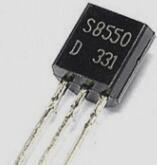 How to Use the S8550 Transistor in Push Pull Configuration?
How to Use the S8550 Transistor in Push Pull Configuration?21 June 20228422
 BC237 Transistor: Datasheet PDF, Pinout, BC547 vs. BC237
BC237 Transistor: Datasheet PDF, Pinout, BC547 vs. BC23706 January 202212380
 A Comprehensive Guide to Texas Instruments MSP430F Series Mixed Signal Microcontrollers
A Comprehensive Guide to Texas Instruments MSP430F Series Mixed Signal Microcontrollers29 February 2024162
![BH1750 Ambient Light Sensor IC Series[Video]:Datasheet, Features, and Applications](https://res.utmel.com/Images/Article/2b8d00ac-cb29-4754-b187-66647f67ef8f.png) BH1750 Ambient Light Sensor IC Series[Video]:Datasheet, Features, and Applications
BH1750 Ambient Light Sensor IC Series[Video]:Datasheet, Features, and Applications13 April 20222439
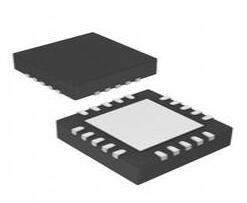 MCP2515 CAN Controller: Datasheet, Pinout, Block Diagram
MCP2515 CAN Controller: Datasheet, Pinout, Block Diagram15 September 20219426
 Opportunities and Challenges for 2D Materials
Opportunities and Challenges for 2D Materials22 March 20223174
 Multivibrator: Circuits, Types and Application
Multivibrator: Circuits, Types and Application08 September 202023587
 Solenoid Switch: Working Principle, Types and Applications
Solenoid Switch: Working Principle, Types and Applications03 February 202124419
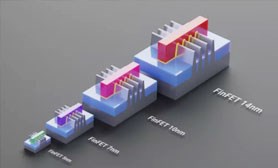 What is MCU Decryption?
What is MCU Decryption?17 January 20221540
 Analog-to-Digital Converters (ADCs): Decrypting Resolutions and Sampling Rates
Analog-to-Digital Converters (ADCs): Decrypting Resolutions and Sampling Rates24 February 20224153
 Parking Access Control System using Arduino
Parking Access Control System using Arduino29 August 20234136
 Kyoto University Successfully Demonstrates That SiC Can Also Work at 350°C
Kyoto University Successfully Demonstrates That SiC Can Also Work at 350°C26 March 2022555
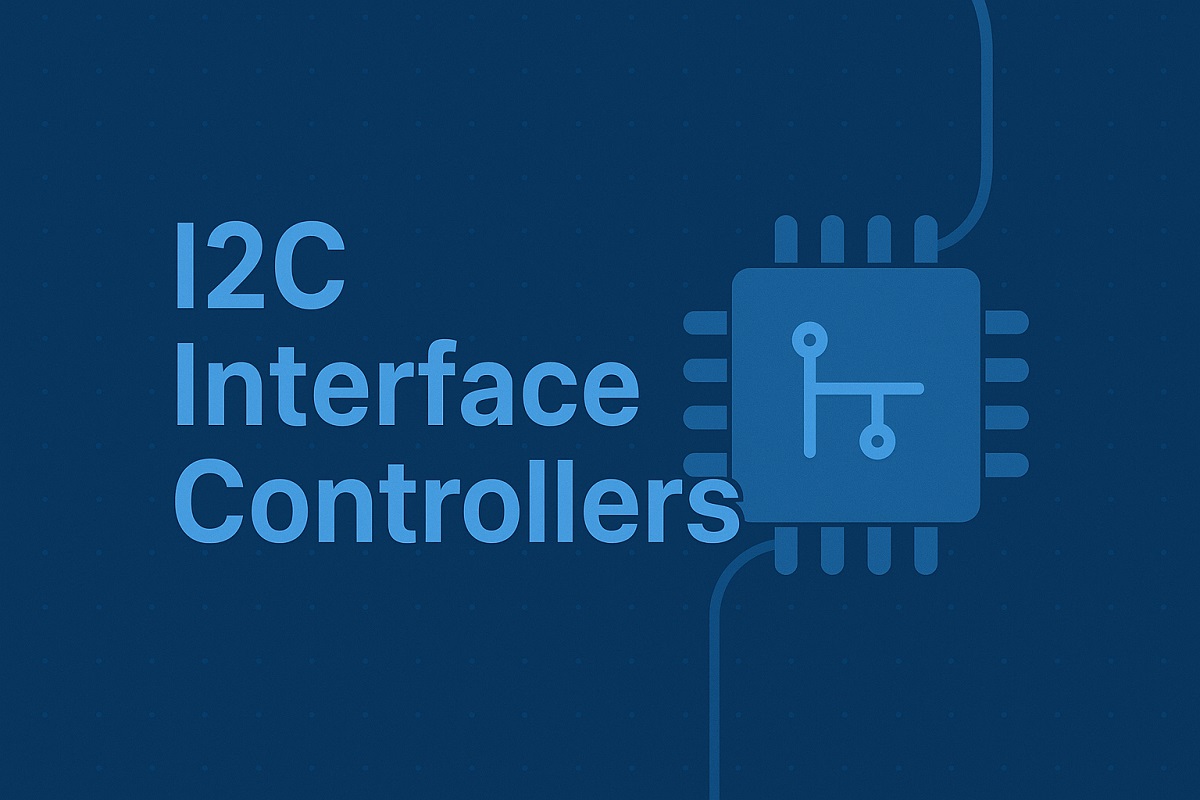 Understanding the Basics of I2C Interface Controllers
Understanding the Basics of I2C Interface Controllers11 June 2025676
Microchip Technology
In Stock
United States
China
Canada
Japan
Russia
Germany
United Kingdom
Singapore
Italy
Hong Kong(China)
Taiwan(China)
France
Korea
Mexico
Netherlands
Malaysia
Austria
Spain
Switzerland
Poland
Thailand
Vietnam
India
United Arab Emirates
Afghanistan
Åland Islands
Albania
Algeria
American Samoa
Andorra
Angola
Anguilla
Antigua & Barbuda
Argentina
Armenia
Aruba
Australia
Azerbaijan
Bahamas
Bahrain
Bangladesh
Barbados
Belarus
Belgium
Belize
Benin
Bermuda
Bhutan
Bolivia
Bonaire, Sint Eustatius and Saba
Bosnia & Herzegovina
Botswana
Brazil
British Indian Ocean Territory
British Virgin Islands
Brunei
Bulgaria
Burkina Faso
Burundi
Cabo Verde
Cambodia
Cameroon
Cayman Islands
Central African Republic
Chad
Chile
Christmas Island
Cocos (Keeling) Islands
Colombia
Comoros
Congo
Congo (DRC)
Cook Islands
Costa Rica
Côte d’Ivoire
Croatia
Cuba
Curaçao
Cyprus
Czechia
Denmark
Djibouti
Dominica
Dominican Republic
Ecuador
Egypt
El Salvador
Equatorial Guinea
Eritrea
Estonia
Eswatini
Ethiopia
Falkland Islands
Faroe Islands
Fiji
Finland
French Guiana
French Polynesia
Gabon
Gambia
Georgia
Ghana
Gibraltar
Greece
Greenland
Grenada
Guadeloupe
Guam
Guatemala
Guernsey
Guinea
Guinea-Bissau
Guyana
Haiti
Honduras
Hungary
Iceland
Indonesia
Iran
Iraq
Ireland
Isle of Man
Israel
Jamaica
Jersey
Jordan
Kazakhstan
Kenya
Kiribati
Kosovo
Kuwait
Kyrgyzstan
Laos
Latvia
Lebanon
Lesotho
Liberia
Libya
Liechtenstein
Lithuania
Luxembourg
Macao(China)
Madagascar
Malawi
Maldives
Mali
Malta
Marshall Islands
Martinique
Mauritania
Mauritius
Mayotte
Micronesia
Moldova
Monaco
Mongolia
Montenegro
Montserrat
Morocco
Mozambique
Myanmar
Namibia
Nauru
Nepal
New Caledonia
New Zealand
Nicaragua
Niger
Nigeria
Niue
Norfolk Island
North Korea
North Macedonia
Northern Mariana Islands
Norway
Oman
Pakistan
Palau
Palestinian Authority
Panama
Papua New Guinea
Paraguay
Peru
Philippines
Pitcairn Islands
Portugal
Puerto Rico
Qatar
Réunion
Romania
Rwanda
Samoa
San Marino
São Tomé & Príncipe
Saudi Arabia
Senegal
Serbia
Seychelles
Sierra Leone
Sint Maarten
Slovakia
Slovenia
Solomon Islands
Somalia
South Africa
South Sudan
Sri Lanka
St Helena, Ascension, Tristan da Cunha
St. Barthélemy
St. Kitts & Nevis
St. Lucia
St. Martin
St. Pierre & Miquelon
St. Vincent & Grenadines
Sudan
Suriname
Svalbard & Jan Mayen
Sweden
Syria
Tajikistan
Tanzania
Timor-Leste
Togo
Tokelau
Tonga
Trinidad & Tobago
Tunisia
Turkey
Turkmenistan
Turks & Caicos Islands
Tuvalu
U.S. Outlying Islands
U.S. Virgin Islands
Uganda
Ukraine
Uruguay
Uzbekistan
Vanuatu
Vatican City
Venezuela
Wallis & Futuna
Yemen
Zambia
Zimbabwe



